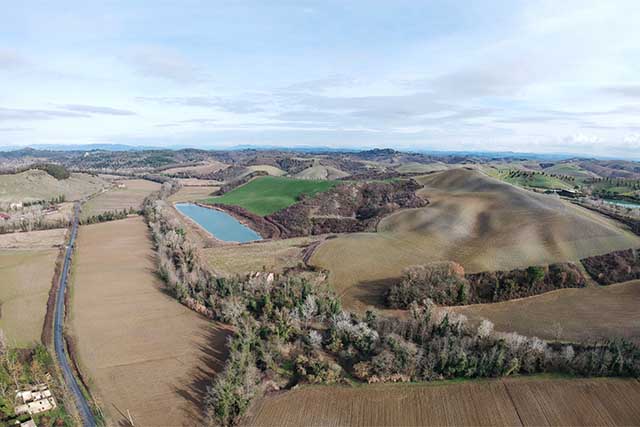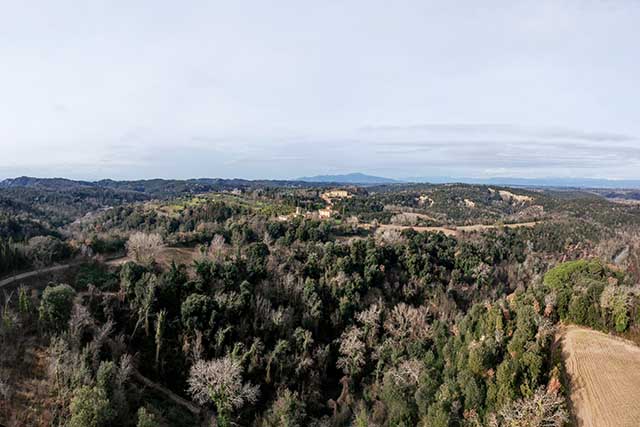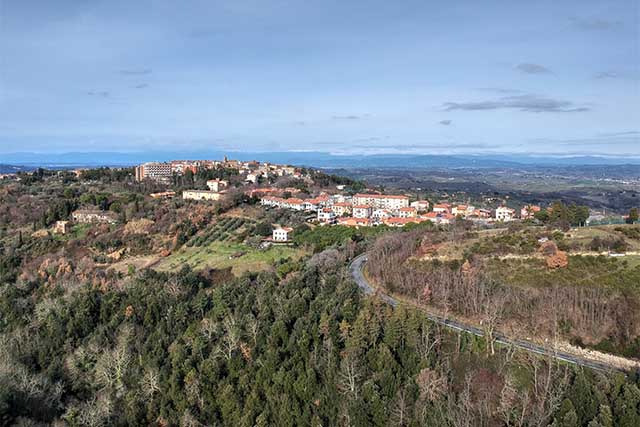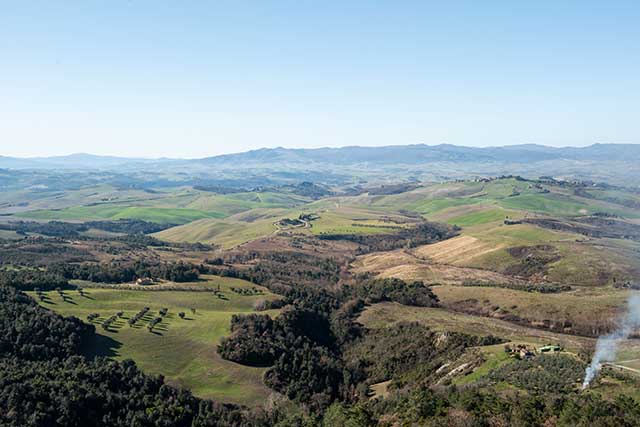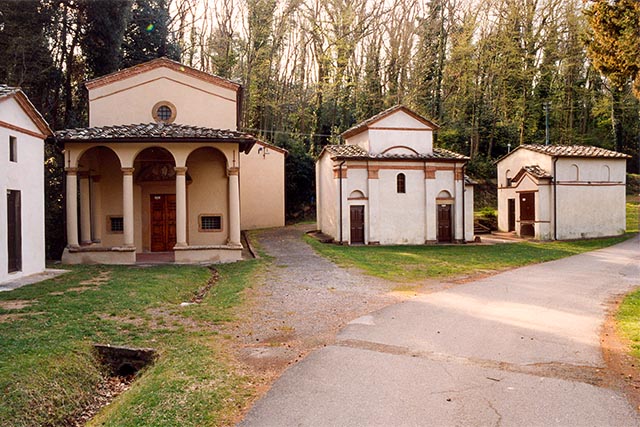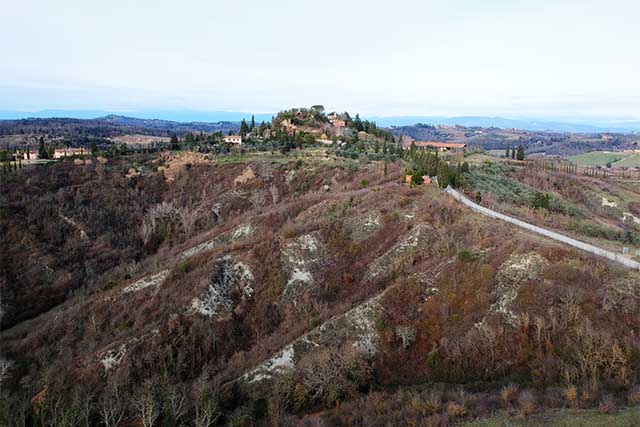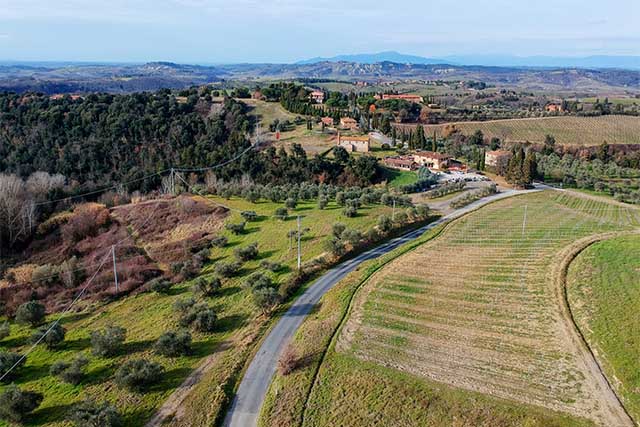Municipality of Montaione
Today there are still some remains of stone walling from the castle of Barbialla within the estate of the villa built in the early 20th century. The castle was originally one of those belonging to the noble Gherardeschi family, in the northernmost area of their ancient possessions in the Val d’Egola. In the 16th century, when Leonardo drew Barbialla, still in the form of a turreted castle surrounded by walls, the small Val d'Egola town counted a population of a few hundred.
Collegalli, which Leonardo drew as a small castle, was in fact originally one of the fortified villages of the Val d'Egola and belonged, at the beginning of the 12th century, to the noble Gherardeschi family. The traces of the ancient castle have been obliterated by the construction, on the same site, of the Villa Strozzi, built at the beginning of the 19th century, used today as a structure for reception. In the area, we still find the toponyms of two of the three parish churches that were dependent on the castle of Collegalli (San Vito and San Paolo), recognizable in the two small rural chapels still maintaining their later forms, in the tiny homonymous farms in the administrative district.
Montaione preserves the imprint of its origins within the fabric of its current building structure. In fact, its form has been that of a castle since the early 13th century, belonging to the de Monteaione family, a branch of the rural aristocracy closely linked to the imperial village of San Miniato. Leonardo drew Montaione as a turreted castle, the form in which he certainly saw it, and the same form in which it is represented in a rare, detailed watercolor from the 16th century, in which Montaione still has its walls complete, with all its wall towers and its two fortified gates, Porta Guelfa and Porta Fiorentina.
The small fortified village that Leonardo indicates with the name of "pietra" depicts a place that has now disappeared, the ancient castle of Pietra. At the beginning of the 12th century, when it appears for the first time in written sources, it must have belonged to the bishop of Volterra. There are few remaining ruins of the ancient castle, which must have been fortified with defensive walls and towers, visible today on the site of the "La Pietrina" Sanctuary at the locality of Palagio (Montaione). We do not know at what point the locality was definitively abandoned, but one thing certain is that, at least during Leonardo’s time, it was still inhabited, and had an appearance similar to a turreted castle.
On the hills of Montaione lies one of the most beautiful Renaissance sanctuaries in Tuscany. It is the Sacred Mount of San Vivaldo, a complex of chapels that reproduces on a reduced scale the topography of the places related to the life and Passion of Jesus. Among the multimedia resources of the exhibition entitled La costruzione di paesaggi devozionali nell’età di Leonardo (The construction of devotional landscapes in the age of Leonardo), splendid virtual tours will be available through which to experience new itineraries for learning about the Jerusalem of San Vivaldo.
Santo Stefano was depicted by Leonardo as a small turreted castle of the Val d'Egola. Actually, there was already a castle on the site in the 12th century, which belonged, for at least a century before, to the powerful noble family of the Cadolingi. At the threshold of Leonardo’s time, in effect, the castle still seems to have been inhabited, albeit in a phase of depopulation. Today nothing remains of that little village of the Val d'Egola other than the name of the place (the small hamlet of Santo Stefano, in the immediate vicinity of Montaione) and the church of San Bartolomeo, perhaps the ancient castle church mentioned at the end of the 13th century.
Today Tonda is a small village that has been transformed into a resort, but during the 16th century, Leonardo drew it as a small castle of the Val d'Egola. The picturesque village, situated a few kilometers from Montaione, was originally a castle belonging to the bishop of Volterra.





